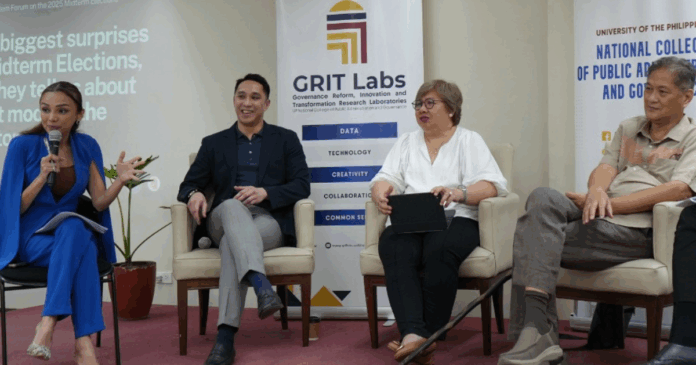“All bets were off.”
This was how Dr. Tony La Viña summed up the 2025 midterm election results during the 9th installment of the Better Governance Forum at UP-SURP on May 16.
Hosted by the University of the Philippines National College of Public Administration and Governance (UP-NCPAG), the forum gathered political experts and insiders and carried a tongue-in-cheek title, “What Hafen, Vella?”—a post-mortem on the 2025 elections.
Joining La Viña were Malou Tiquia, founder and CEO of PUBLiCUS Asia, and Dr. Robin Michael Garcia, founder and chairman of WR Numero Research.
Throughout the afternoon, the three unpacked what they described as a volatile and highly partisan election. For La Viña, the real story wasn’t in the Senate, but in the local races, where high-profile, well-oiled, and heavily backed candidates lost to unlikely names.
Former celebrities and dynasties were also unseated.
“The big results aren’t in the Senate,” he said, emphasizing that the real change in politics was seen at the local level.
On the other hand, Tiquia called it a protest vote. Neither the administration slate nor the opposition secured a majority in the Senate. The chamber ended up in what is now being referred to as the “5-5-2 Split”: 5 seats went to Alyansa para sa Bagong Pilipinas (a coalition backed by the current administration of President Ferdinand “Bongbong” Marcos Jr), 5 to Partido Demokratiko Pilipino (backed by the current Vice President Sara Duterte), and 2 to the Progressives — the so-called KiBam group of Kiko Pangilinan and Bam Aquino.
“This is the people saying, ‘kami naman,’” Tiquia said.
Meanwhile, Garcia pointed to surveys’ influence, not just as snapshots of public opinion, but as tools that shaped campaign direction. He also stressed the power of command votes, whether from the administration, religious blocs, or civil society groups that mobilized endorsements.
For him, this election was deeply polarizing and intense, saying that “consolidations” of votes happened right up to the elections themselves.
Still, all three experts expressed cautious optimism. The numbers, they said, speak for themselves. Anyone with a solid, well-run campaign has a shot now.
It’s no longer just a game of tarpaulins, speaker trucks, and name recall. Even those with minimal machinery are now in play.



